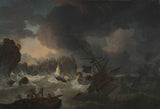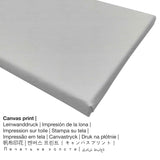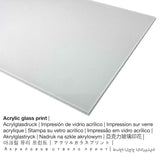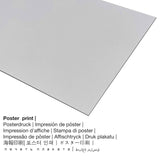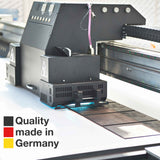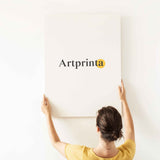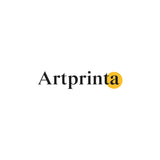Hendrik Kobell, 1775 - Ụgbọ mmiri mebiri - mbipụta nka mara mma
Ụtụ gụnyere. Mbupu gbakọrọ na ndenye ọpụpụ.
Ihe nka ihe karịrị afọ 240 Shipwreck was made by Hendrik Kobell. It belongs to the digital collection of Rijksmuseum, nke bụ nnukwu ihe ngosi nka maka nka na akụkọ Dutch site na Middle Ages ruo ugbu a. Site n'ikike nke - Rijksmuseum (public domain license).: . Furthermore, alignment of the digital reproduction is in landscape format with a ratio of 3 : 2, meaning that the length is 50% longer than the width. Hendrik Kobell was a draftsman, painter, etcher of Dutch nationality, whose art style can mainly be assigned to Rococo. The Dutch artist lived for 28 years and was born in the year 1751 in Rotterdam, South Holland, Netherlands and deceased in the year 1779.
Họrọ ngwa ngwaahịa ọkacha mmasị gị
Maka mbipụta nka ọ bụla, anyị na-enye ụdị nha & ihe dị iche iche. N'ihi ya, anyị na-enye gị ohere ịhọrọ n'ime nhọrọ ndị a:
- Poster (akwa akwa akwa): A poster is a UV printed canvas paper with a fine texture on the surface, that reminds the actual work of art. Please keep in mind, that depending on the absolute size of the poster print we add a white margin between 2-6cm round about the painting, which facilitates the framing with your custom frame.
- Aluminom dibond (ọkpụkpụ ọla): Aluminium Dibond prints are prints on metal with an impressive depth effect. Its non-reflective surface structure creates a contemporary look. For our Print On Aluminum Dibond, we print your artwork right on the aluminium surface. The bright & white parts of the original work of art shine with a silky gloss but without any glare. The colors are bright and vivid, the fine details of the print appear crisp.
- Mbipụta iko acrylic (nke nwere ezigbo mkpuchi iko n'elu): A glossy acrylic glass print, which is sometimes labelled as a print on plexiglass, will transform the original work of art into beautiful décor. The work of art is being printed with the help of modern UV direct printing technology. It makes sharp and rich colors.
- Mbipụta kanvas: A canvas direct print is a printed cotton canvas stretched on a wooden frame. What is more, printed canvas makes a cosy and appealing appearance. Your canvas print of this work of art will allow you to transform your very own fine art print into a large artpiece. The great advantage of canvas prints is that they are relatively low in weight, meaning that it is quite simple to hang the Canvas print without any wall-mounts. Because of thata canvas print is suitable for any type of wall.
Ederede iwu dị mkpa: We try everything to describe our products as clearly as it is possible and to display them visually in our shop. Still, the tone of the printing material and the imprint can vary somehwat from the image on your monitor. Depending on the settings of your screen and the condition of the surface, color pigments can unfortunately not be printed as realistically as the digital version. Because all the art reproductions are processed and printed manually, there might also be slight discrepancies in the motif's size and exact position.
Banyere ngwaahịa a
| Nkewa bipụta: | ọrụ mgbidi |
| Usoro mmeghari: | dijitalụ mmeputakwa |
| Production usoro: | Mbipụta UV ozugbo (mbipụta dijitalụ) |
| Nlụpụta: | emere na Germany |
| Ụdị ngwaahịa: | a na-achọ |
| Ngwaahịa were: | ihe ndozi mgbidi, ihe ndozi ụlọ |
| Ndepụta: | usoro odida obodo |
| Njikwa oyiyi: | 3: 2 |
| Mmetụta ihe onyonyo: | ogologo bụ 50% ogologo karịa obosara |
| Akwa ngwaahịa dị: | Mbipụta iko acrylic (nke nwere ezigbo mkpuchi iko), mbipụta akwa akwa, mbipụta akwụkwọ mmado (akwụkwọ kwaaji), mbipụta ọla (aluminium dibbond) |
| Kanvas n'elu etiti ihe ndọtị (mbipụta akwa akwa): | 30x20cm - 12x8", 60x40cm - 24x16", 90x60cm - 35x24", 120x80cm - 47x31", 150x100cm - 59x39" |
| Mbipụta iko acrylic (nke nwere ezigbo mkpuchi iko): | 30x20cm - 12x8", 60x40cm - 24x16", 90x60cm - 35x24", 120x80cm - 47x31", 150x100cm - 59x39" |
| Nhọrọ nha nke akwụkwọ mmado (akwụkwọ kwaaji): | 60x40cm - 24x16", 90x60cm - 35x24", 120x80cm - 47x31" |
| Mbipụta aluminom: | 30x20cm - 12x8", 60x40cm - 24x16", 90x60cm - 35x24", 120x80cm - 47x31" |
| Nhazi nke nka nka: | enweghị etiti |
Ozi nka ahaziri
| Aha nke ọrụ nka: | "Ụgbọ mmiri kpuru" |
| nhazi ọkwa: | sere |
| Category: | nka ochie |
| Narị afọ nka: | 18th narị afọ |
| Year: | 1775 |
| Afọ nka: | karịa afọ 240 |
| Ụlọ ihe ngosi nka / mkpokọta: | Rijksmuseum |
| Ebe ebe ngosi nka: | Amsterdam, Netherlands |
| Weebụsaịtị ihe ngosi nka: | www.rijksmuseum.nl |
| Ụdị ikike nka: | ngalaba ọha |
| Site n'aka: | Rijksmuseum |
Ose okwu
| Aha onye nka: | Hendrik Kobell |
| Aha ndị ọzọ: | Kobell, Kobill Hendrik, Kobell Hendrik, hendrick kobell, Kobill, H. Cobel, kobell h., Hendrik Kobell, Kobell Henry, H. Kobell |
| okike onye nka: | nwoke |
| Obodo onye nka: | Dutch |
| Ọrụ: | onye na-ese ihe, onye na-ese ihe, onye na-ese ihe |
| Obodo obibi: | mba netherland |
| nhazi ọkwa: | nna ukwu ochie |
| Ụdị nke onye na-ese ihe: | Rococo |
| Akwụsị: | 28 afọ |
| A mụrụ: | 1751 |
| Obodo ọmụmụ: | Rotterdam, South Holland, Netherlands |
| Afọ nwụrụ: | 1779 |
| Nwụrụ na (ebe): | Rotterdam, South Holland, Netherlands |
© echekwabara ikike nwebiisinka, Artprinta.com
Ozi izugbe si Rijksmuseum website (© nwebiisinka - Rijksmuseum - Rijksmuseum)
The shipwreck. British warships and a Moroccan three-master in need during a storm off the North African coast, 1775. Left in the foreground a group of five men on a rock at the seashore. Further back lightning above a walled city on the coast.

